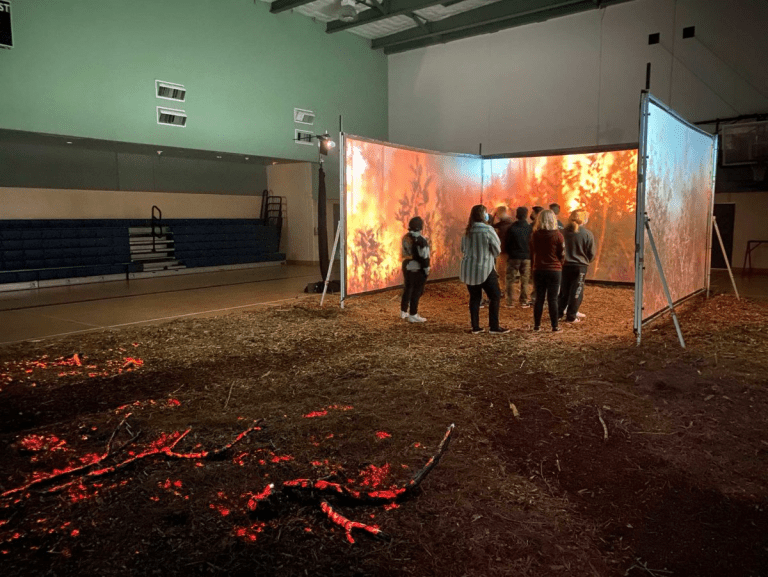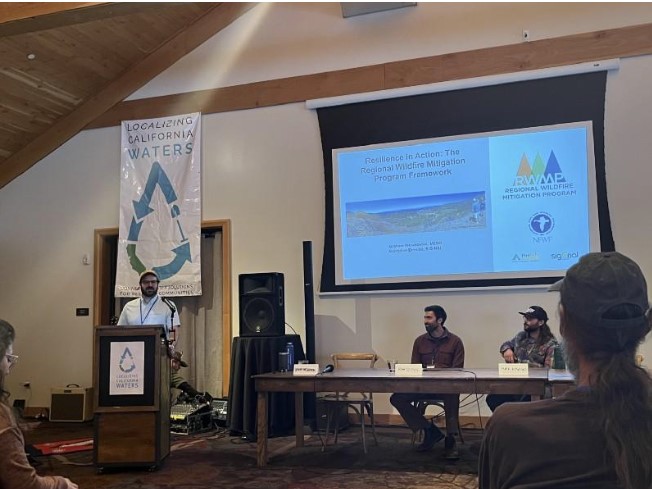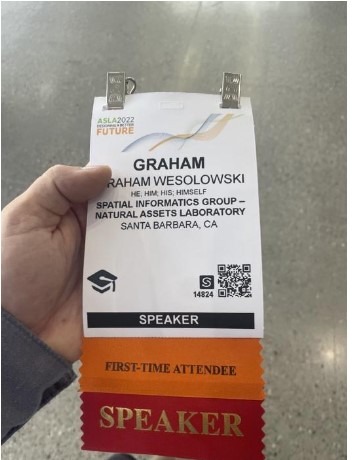Close
Close
After visiting conferences throughout the last year, SIG-NAL’s Executive Director, Graham Wesolowski details his experiences initiating a Regional Wildfire Mitigation program:
For the past 18 months, I have been working on starting up the Regional Wildfire Mitigation Program (RWMP). The RWMP came about when Spatial Informatics Group – National Assets Laboratory (SIG-NAL), and the University of California Santa Barbara received a grant from the National Fish and Wildlife Foundation to create a framework for increasing wildfire resilience for the wildland urban interface (WUI) communities along Santa Barbara County’s southern coast.
This is an expansive and complex effort. We navigated technical hurdles, developed important local partnerships, and built relationships with landowners across the region. Just when I thought we might be at an impasse, the team would make a breakthrough. The resulting RWMP, presented to the Santa Barbara area in 2022, will transform the area’s front country into a fire-adapted region with reduced wildfire risk to the communities, the built environment, and the natural systems, while allowing wildfire to play a regenerative role across the landscape. The RWMP will work collaboratively to foster resilience and build adaptive capacity that will allow our community to prepare, respond, and recover from the shock of large wildfires.

Visitors standing inside the “Walk Into Wildfire” exhibit created by artist Ethan Turpin.
Our approach to reducing wildfire risk in Santa Barbara County has three parts: Landscape Resilience, Built Environment Resilience, and Community Resilience.
The Landscape Resilience Domain will develop and propose a fire-resistant buffer or “greenbelt” area in strategic locations within the program area to create wildfire resilient green space, working lands, and habitats.
The Built Environment Resilience Domain will build local capacity to retrofit and increase the resilience of homes, businesses, and critical infrastructure for wildfire threats. Through in-depth mapping and assessment of physical risks, the Built Environment Domain will prioritize retrofitting and mitigation programs in areas that will provide the highest community benefit.
Lastly, through collaboration with the Santa Barbara County Fire Safe Council, the Community Resilience Domain engages, educates, and trains local residents and communities to increase their resilience to wildfire. This involves informing residents of their wildfire risk by conducting home evaluations and working directly with communities to reduce their wildfire risk. Everyone at SIG-NAL is so proud of this work; I was excited to share the results with my colleagues in a conference setting.
My first stop was the Localizing California Waters Conference in Yosemite, where I was able to share our work with policy makers and practitioners from all across California. Our work on developing hydrated buffers to bolster communities from wildfire risk was very well received, and I learned from and made valuable connections with seasoned professionals.

Visitors standing inside the “Walk Into Wildfire” exhibit created by artist Ethan Turpin.

My second stop was the Association of Landscape Architects 2022 annual conference in San Francisco. For my panel, I spoke with Alison Eckler and Dr. Thomas Azwell about new ways to plan for wildfire. It was great to speak alongside a landscape architect and an academic in front of a packed house to talk about the future of wildfire resilience planning.
It has been a time of real personal and professional growth as well. I assumed leadership of the RWMP shortly before my second child was born. At times, the fullness of life felt overwhelming. When I was asked to share my work at the Association of Landscape Architects annual conference and the Localizing California Waters Conference, I was hesitant because it was a busy time for the RWMP and difficult to leave two babies at home — but I said “yes” to both opportunities and am so glad that I did. I had the pleasure of sharing the hard work that my team at SIG-NAL has been doing in developing community supported projects.
After 900 miles of driving, many nights on the road, and many new connections made, I returned home to settle back in and begin the work again. The RWMP team continues to develop scientific resources around wildfire resilience, and we are actively developing pilot projects across the region in order to make the Santa Barbara community a safer and more resilient place for residents.
Learn more about RWMP here!
In February, SIG hosted a lunch and learn where Graham Wesolowski presented all about the RWMP. We recorded this lunch and learn and you can watch it now on our Youtube channel!
To learn more about SIG-NAL, visit our website here.